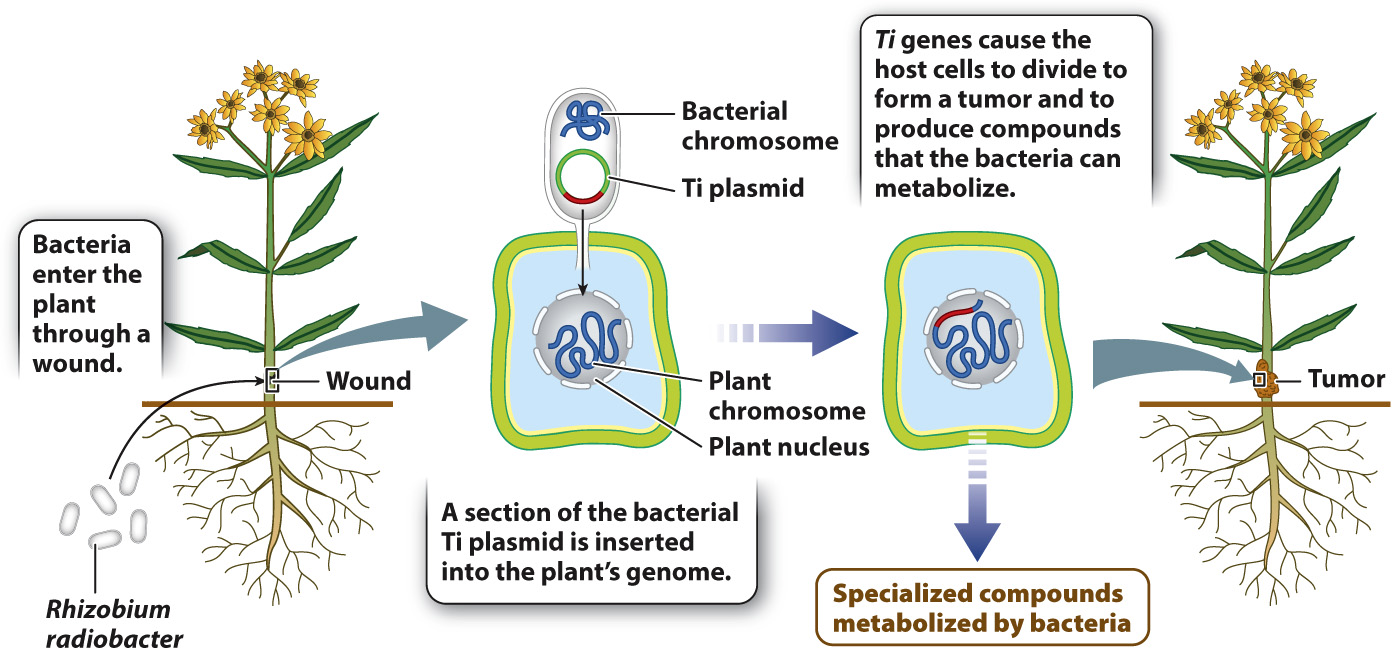A pathogenic bacterium provides a way to modify plant genomes.
Some pathogenic bacteria alter their host plant’s biology by inserting their own genes into the host’s genome. One such pathogen, Rhizobium radiobacter (formerly known as Agrobacterium tumifaciens), is useful to humans, despite the fact that it can cause widespread damage to crops such as apples and grapes. The reason? This bacterium’s naturally evolved ability to incorporate its DNA into the genome of its host plant provides a surprisingly easy way to genetically modify plants.
Rhizobium radiobacter is a soil bacterium with virulent strains that infect the roots and stems of many plants. Virulent bacteria enter a plant through wounds and move through the plant’s cell walls, propelled by flagella. A tumor, or gall, forms at the point of infection, often where the stem emerges from the soil, and for this reason R. radiobacter infection is called crown gall disease. R. radiobacter alters the growth and metabolism of infected cells by inserting some of its own genes into the chromosomal DNA of the host plant (Fig. 32.9).

Virulent strains of R. radiobacter contain a plasmid, called the Ti plasmid, which is a small (~200 kb), circular DNA molecule containing the genes that are integrated into the host cell’s genome, as well as all the genes needed to make this transfer. Some of the transferred genes—
Biologists interested in genetically modifying crops and other plants make use of R. radiobacter’s ability to insert genes into the host genome. The first step is to replace the genes in the Ti plasmid that are usually inserted into the plant genome. Genes for gall formation are removed, and genes of interest are inserted. Examples of genes that have been transferred into plants in this way include genes whose products increase the plant’s nutritional value or confer resistance against disease. In addition, researchers need a way to identify which cells have taken up the genes, and so a marker gene, for example one conferring antibiotic resistance, is typically included. In this way, cells that survive an application of the antibiotic are known to have successfully incorporated the Ti plasmid into their genome.